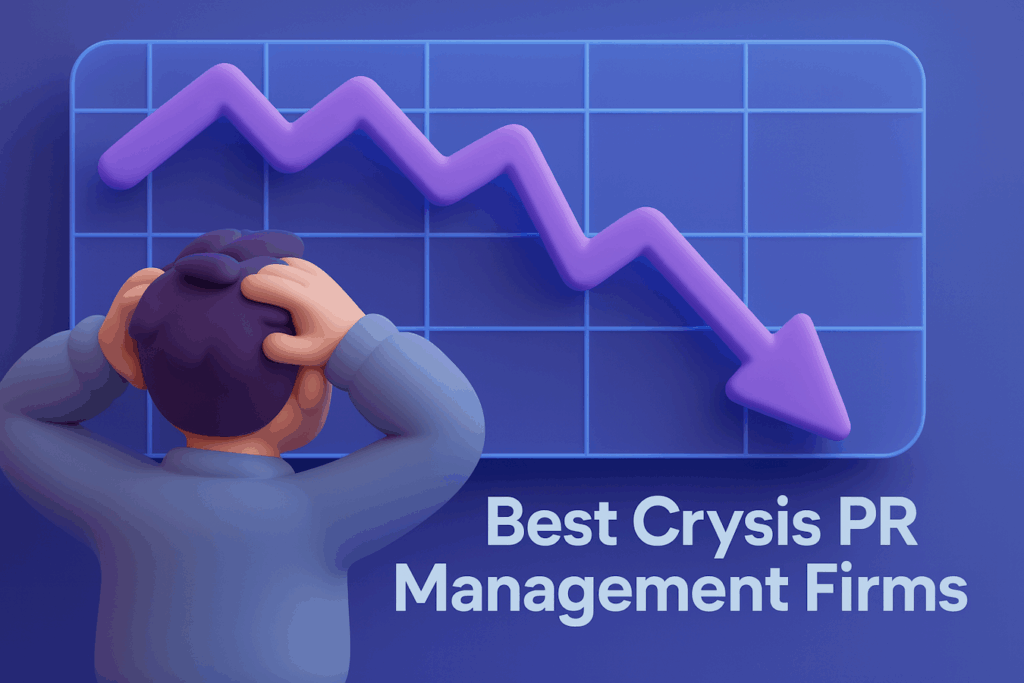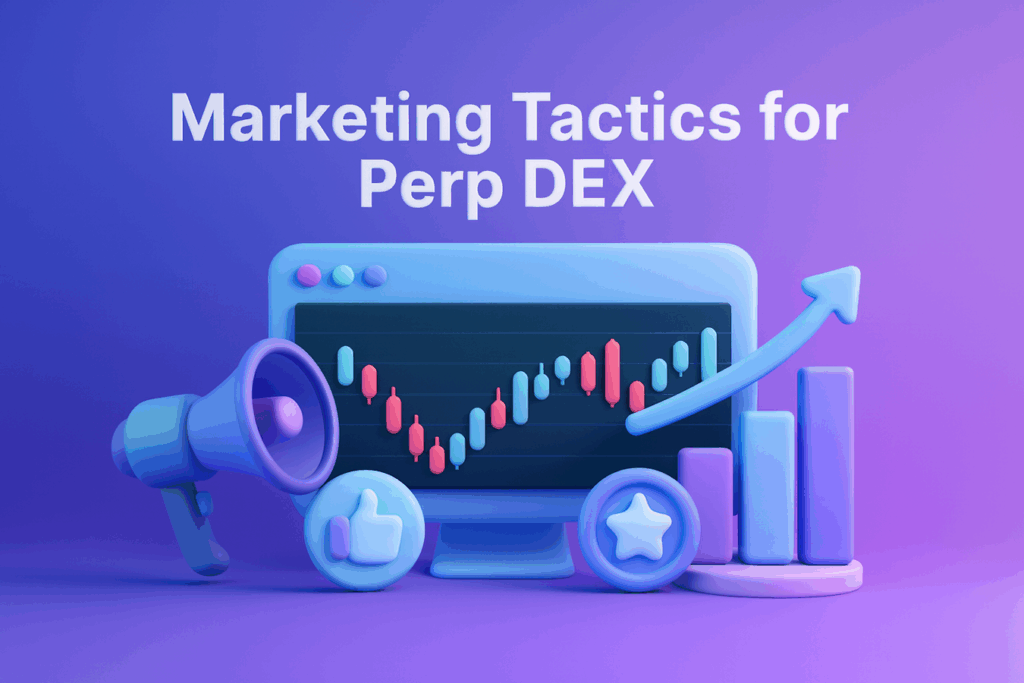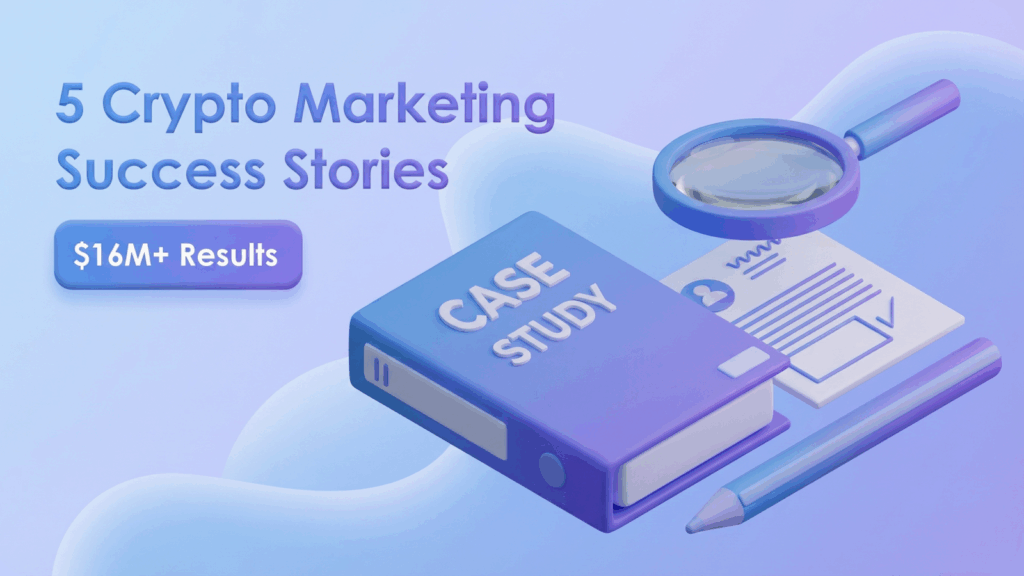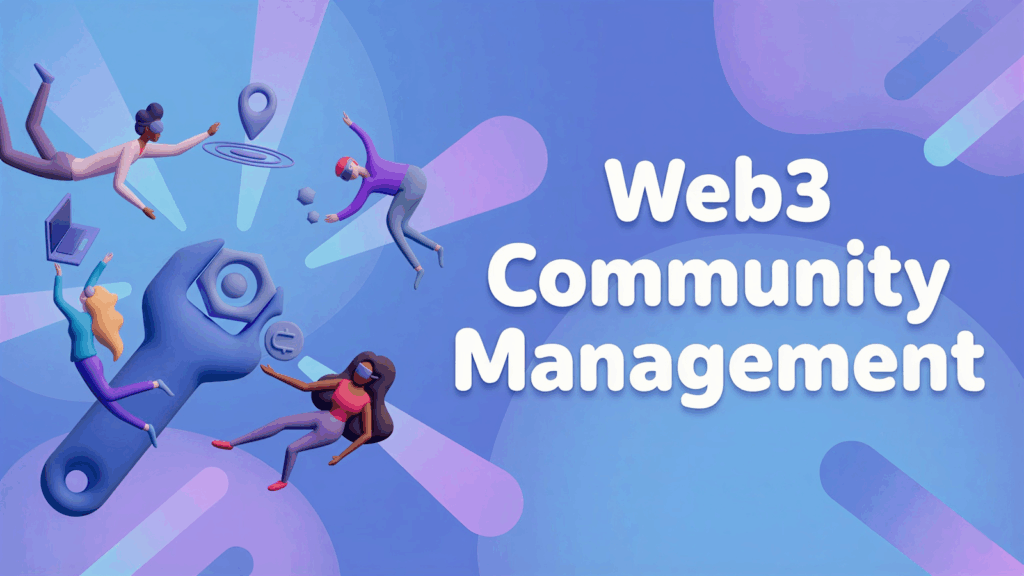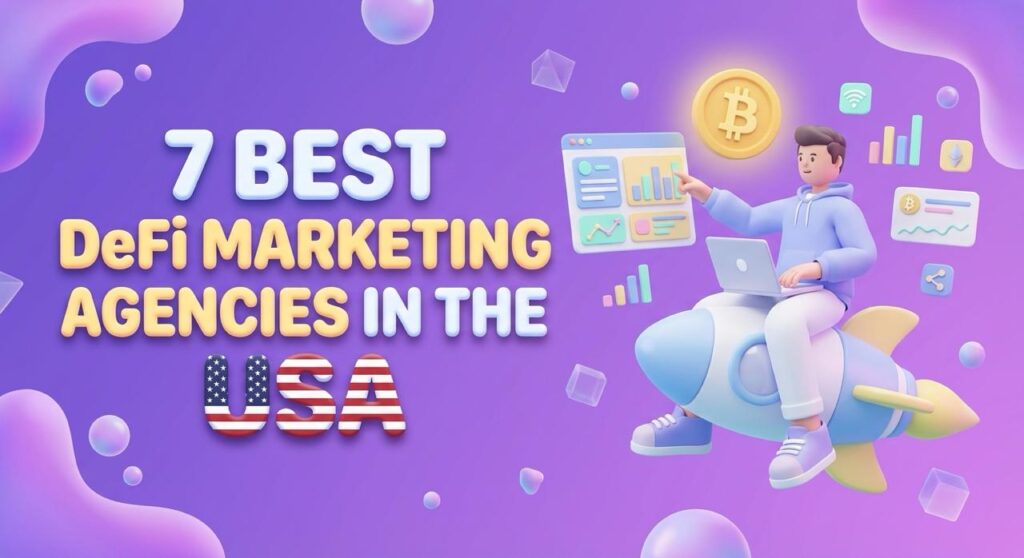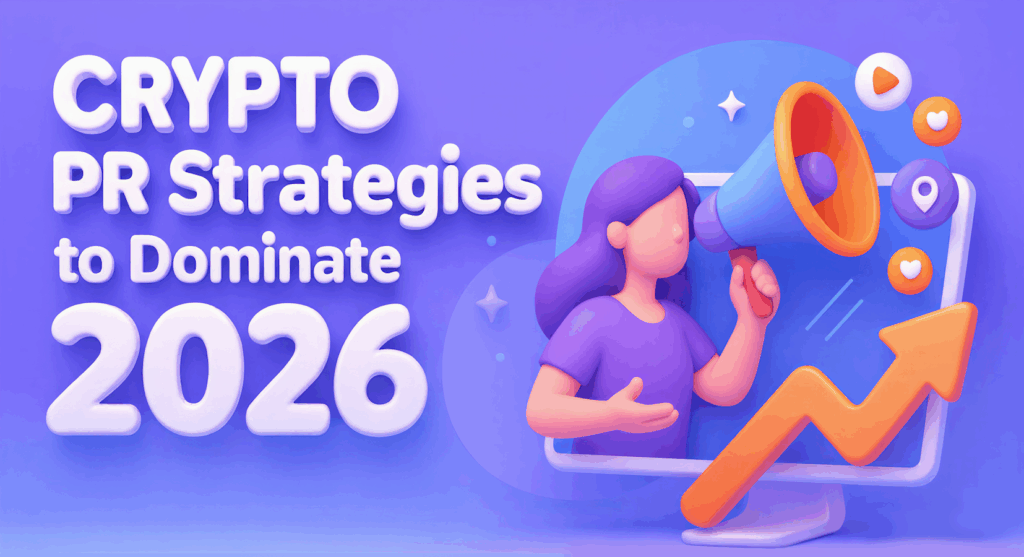Introduction
Google just changed the rules of search visibility, and most businesses haven’t even noticed.
There’s a new battleground emerging at the top of search results — above the organic listings, above the ads, above everything. It’s called AI Overviews, and it’s fundamentally reshaping how users find and trust information online.
Here’s what’s happening: While traditional marketers are still fighting for position #1 in the blue links, a select group of websites are being featured as authoritative sources directly in Google’s AI-generated answers. They’re not just ranking—they’re becoming the voice Google itself quotes to millions of searchers.
The visibility advantage is massive. The authority boost is unprecedented. And right now, most of your competition has no idea this shift is even happening.
But there’s a catch: The strategies that worked for traditional SEO won’t get you into AI Overviews. The algorithms, ranking signals, and content structures operate on completely different rules.
The good news? You’re early. The space is still relatively open. And the businesses that figure this out now are building compounding advantages that will be incredibly difficult for latecomers to overcome.
By the end of this guide, you’ll have a complete roadmap to appear in Google’s AI-generated results—step by step, without the technical overwhelm. You’ll understand what AI Overviews are, why they matter more than traditional rankings, and exactly how to optimize your content for AI visibility.
Let’s dive in.
What Are Google AI Overviews?
Google AI Overviews (previously called Search Generative Experience or SGE) are AI-powered summaries that appear at the top of search results for certain queries.
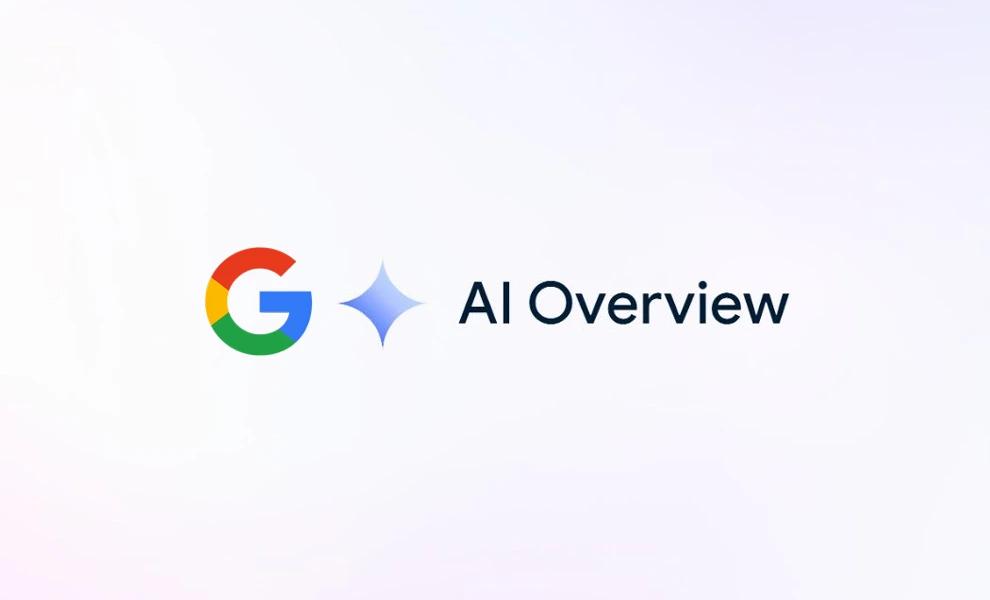
Instead of just showing a list of blue links, Google’s AI reads multiple sources, synthesizes the information, and generates a comprehensive answer complete with citations and follow-up suggestions.
Think of it as Google giving users a research assistant that summarizes the web for them.
The game-changing part? AI Overviews appear above traditional search results, capturing attention before users even scroll to the organic listings. They include:
- A synthesized answer to the search query
- Links to 3-8 source websites (the citations)
- Related questions users can explore
- Visual elements like images or diagrams when relevant
For business owners, this creates both a challenge and an opportunity. The challenge is that fewer users may click through to traditional results. The opportunity is that being cited in an AI Overview can drive massive visibility and position you as an authority.
How Google Selects Content for AI Overviews
Google’s AI doesn’t randomly pick sources. It follows specific patterns and prioritizes certain content characteristics.
The Core Ranking Factors
- Direct Answer Quality –
The AI prioritizes content that directly answers the query without meandering. If someone searches “how to fix a leaky faucet,” content that immediately provides steps wins over content that starts with the history of plumbing.
- E-E-A-T Signals (Experience, Expertise, Authoritativeness, Trust)
Google’s AI heavily weighs expertise markers. This includes author credentials, site reputation in the topic area, and trust signals like citations from other authoritative sources.
- Content Structure and Clarity
Well-structured content with clear headings, short paragraphs, and logical flow gets preferred. The AI needs to easily parse and extract information—dense walls of text lose out to scannable formats.
- Semantic Relevance
Google’s AI understands topics, not just keywords. Content that demonstrates deep topical coverage and uses semantically related terms naturally ranks better than keyword-stuffed articles.
- Freshness and Recency
For time-sensitive topics, recently updated content gets priority. A 2025 article about “social media trends” will beat a 2020 article, even if the older one has more backlinks.
- Schema Markup and Structured Data
Content with proper schema markup (FAQs, How-Tos, Articles, Products) is easier for AI to understand and extract. This gives you a significant advantage.
5. Freshness and Recency
For time-sensitive topics, recently updated content gets priority. A 2024 article about “social media trends” will beat a 2020 article, even if the older one has more backlinks.
6. Schema Markup and Structured Data
Content with proper schema markup (FAQs, How-Tos, Articles, Products) is easier for AI to understand and extract. This gives you a significant advantage.
Comparison: Traditional SEO vs. AI Overview Optimization
| Factor | Traditional SEO | AI Overview Optimization |
| Primary Focus | Keywords & backlinks | Direct answers & structure |
| Content Length | Longer is often better | Concise + comprehensive |
| Success Metric | Page 1 rankings | AI Overview citations |
| Technical Priority | Site speed, mobile-friendly | Schema markup, structured data |
| Update Frequency | Quarterly or as needed | Monthly minimum for top content |
| Authority Signals | Domain age, backlink profile | E-E-A-T markers, topical depth |
| Keyword Strategy | Target keywords | Natural language queries |
| Content Type | Mixed formats | Question-answer, how-to guides |
Why Appearing in AI Overviews Matters for Your Business
The New “Position Zero”

Remember when everyone fought for featured snippets? AI Overviews are featured snippets on steroids.
They dominate the viewport, answer complex questions (not just simple definitions), and are appearing for more query types every month. Google is rolling them out aggressively—they now show up for approximately 15-20% of searches, with that number growing weekly.
Authority Through Association
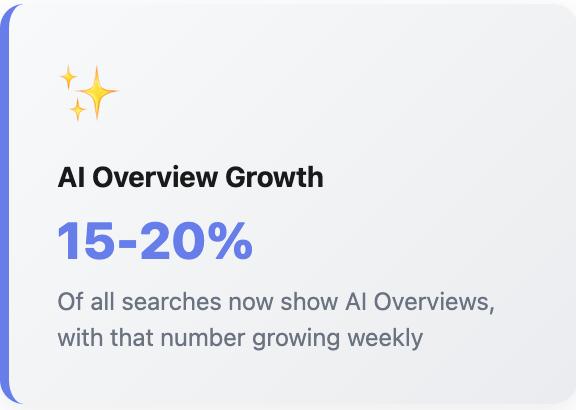
When Google’s AI cites your content, you’re not just getting a link. You’re being endorsed by Google as a credible source on that topic.
This builds brand authority faster than traditional SEO ever could. Users see your name alongside (or instead of) industry giants, immediately elevating your perceived expertise.
Future-Proof Visibility
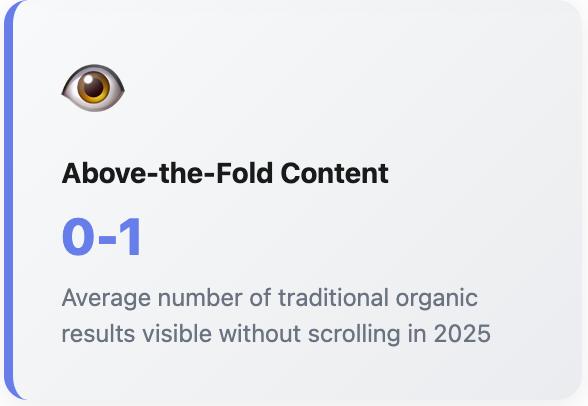
Here’s the hard truth: traditional organic results are getting pushed down. With AI Overviews, ads, featured snippets, and People Also Ask boxes, the first organic result is often below the fold.
Optimizing for AI Overviews isn’t optional—it’s survival. The businesses that adapt now will dominate search visibility for the next decade.
Higher-Quality Traffic

AI Overviews appear for informational, commercial, and transactional queries. When users click through from an AI Overview, they’re already warmed up—they’ve read your expertise in context and chosen to learn more.
This typically results in lower bounce rates and higher conversion rates compared to standard organic traffic.
What You’re Missing Right Now Ignoring Google AI Overviews
Total opportunity captured by AI-optimized websites:
average traffic increase for featured sources
monthly clicks going to AI Overview citations
of commercial searches now trigger AI Overviews
Every day you wait, your competitors are capturing visibility, authority, and traffic that should be yours. These numbers aren’t projections — they’re what’s happening right now in your industry while traditional SEO strategies slowly become obsolete.
The businesses optimizing for AI Overviews today are building compounding advantages. They’re becoming the default sources Google’s AI references. They’re capturing the attention of ready-to-buy customers before anyone else even appears on the page.
The question isn’t whether AI search will dominate. It’s whether you’ll adapt before or after your market share disappears.
Step-by-Step Strategies to Dominate
AI Overviews
Strategy 1: Target Question-Based and Long-Tail Queries
AI Overviews appear most frequently for questions and complex queries.
Action steps:
- Use tools like AnswerThePublic, AlsoAsked, or People Also Ask data to find question-based keywords
- Structure content around “how to,” “what is,” “why does,” and “best ways to” queries
- Target long-tail keywords (4+ words) where AI Overviews are more likely to appear
- Create dedicated FAQ pages for your industry’s most common questions
Strategy 2: Implement Comprehensive Schema Markup
Schema markup is the language that helps Google’s AI understand your content structure.
Action steps:
- Add FAQ schema to pages with question-answer format
- Use HowTo schema for step-by-step guides
- Implement Article schema with proper headline, author, and date published
- Add Organization and Local Business schema to establish authority
- Use Product schema for e-commerce content
- Test your markup with Google’s Rich Results Test tool
Strategy 3: Create “AI-Friendly” Content Structure
Action steps:
- Start with a direct answer in the first 100 words
- Use descriptive H2 and H3 headings that include the question or topic
- Keep paragraphs to 2-4 sentences maximum
- Use bullet points and numbered lists liberally
- Add a table of contents for longer articles
- Include a concise summary or key takeaways section
- Break complex topics into digestible chunks
Strategy 4: Build Topical Authority with Content Clusters
Google’s AI favors sites that demonstrate depth in a subject area.
Action steps:
- Identify your core topic “pillars” (3-5 main themes)
- Create a comprehensive pillar page for each theme (2,000+ words)
- Develop 8-12 cluster articles that dive deep into subtopics
- Interlink all related content intelligently
- Update your content cluster regularly to maintain freshness
- Use consistent terminology across your topic cluster
Strategy 5: Optimize for “People Also Ask” Questions
PAA questions often feed directly into AI Overviews.
Action steps:
- Search your target keywords and document all PAA questions
- Create dedicated sections or pages answering these questions
- Use the exact PAA question as an H2 heading
- Provide concise answers (40-60 words) followed by elaboration
- Include 2-3 related PAA answers in each article to increase relevance
Strategy 6: Enhance E-E-A-T Signals
Action steps:
- Add detailed author bios with credentials and expertise
- Link to author profiles or LinkedIn
- Include citations to reputable sources
- Publish original research, case studies, or data
- Secure mentions or links from authoritative sites in your niche
- Display trust badges, certifications, or partnerships
- Add customer testimonials and reviews
Strategy 7: Focus on Featured Snippet Optimization
Content that wins featured snippets often gets cited in AI Overviews.
Action steps:
- Format answers in snippet-friendly ways (paragraphs, lists, tables)
- Use the “inverted pyramid” style: answer first, details after
- Keep target answers to 40-60 words for paragraph snippets
- Create comparison tables for “X vs Y” queries
- Use numbered lists for “steps to” queries
- Include the question in your heading and answer immediately below
Strategy 8: Regularly Update and Expand Content
Freshness signals are crucial for AI Overview inclusion.
Action steps:
- Audit your top-performing content quarterly
- Add new sections covering recent developments
- Update statistics, examples, and dates
- Expand thin content to at least 1,500 words
- Add new FAQ sections based on emerging questions
- Change publication dates after substantial updates
Content Best Practices for AI Visibility
| Best Practice | Description | Why It Matters |
| Write for Humans, Structure for AI | Your content should read naturally with clear topic sentences and logical progression, avoiding excessive creativity in formatting. | Natural writing engages readers while clean structure helps AI parsing and extraction. |
| Use Comprehensive Brief Answer Format | Lead with a 2-3 sentence direct answer, then elaborate with supporting details and examples. | Satisfies both quick scanners and deep readers while making content perfect for AI extraction. |
| Embrace Conversational Language | Write how people actually search and speak, using natural phrases like “how to optimize your website” instead of “SEO optimization techniques.” | Google’s AI understands natural language queries better than keyword-focused corporate speak. |
| Include Data and Statistics | Incorporate original research, surveys, and concrete numbers to support claims. | Data-rich content is more cite-worthy when Google’s AI needs evidence to support generated answers. |
| Optimize Images with Descriptive Alt Text | Use keyword-rich, descriptive alt text that explains what the image shows. | AI Overviews sometimes include visuals; properly tagged images increase your chances of visual inclusion. |
| Build Internal Linking Hierarchies | Strategically link related content using descriptive, keyword-rich anchor text. | Helps Google’s AI understand your site’s topic relationships and depth of coverage in subject areas. |
Common Mistakes to Avoid
Mistake #1: Keyword Stuffing
AI can detect unnatural language. Write for humans first, and naturally incorporate keywords rather than forcing them.
Mistake #2: Ignoring Mobile Experience
AI Overviews appear predominantly on mobile searches. If your site isn’t mobile-optimized with fast load times, you’re out of the running.
Mistake #3: Creating Thin, Surface-Level Content
AI Overviews favor comprehensive coverage. A 500-word article won’t compete with a thorough 2,000-word guide, even if both answer the same question.
Mistake #4: Overlooking Local SEO Signals
For location-based queries, AI Overviews pull from local results. Optimize your Google Business Profile and local citations to appear in geographically relevant overviews.
Mistake #5: Neglecting Content Updates
Stale content loses AI Overview placement to fresher alternatives. Set a content refresh schedule and stick to it.
Mistake #6: Focusing Only on Commercial Keywords
AI Overviews appear most often for informational queries. Create educational content in your niche, not just product pages, to build authority that flows to your commercial pages.
Conclusion: The Path to AI Overview Dominance
Every day spent without optimizing for Google AI Overviews represents lost visibility to competitors. But here’s the reality: implementing these strategies effectively requires more than just understanding the concepts.
Continuous monitoring, technical expertise, content optimization at scale, and the ability to adapt as Google’s AI evolves are essential. Most businesses simply lack the bandwidth to execute this while running daily operations.
That’s where expert guidance becomes essential.
For businesses serious about dominating AI-powered search, working with specialists who focus exclusively on AI SEO makes all the difference. The challenge is finding a partner who truly understands both the technical implementation and the content strategy required for consistent AI Overview placement.
After researching agencies leading this space, one name consistently rises to the top: the team at ICODA has built an entire practice around helping online businesses crack the AI Overview code. What makes this approach particularly effective is the holistic methodology—not just optimizing individual pages, but architecting entire content ecosystems that position brands as go-to authorities in specific niches.
The methodology covers everything from implementing advanced schema markup to building topical authority clusters to continuously monitoring AI Overview placements. It’s the full-spectrum approach that AI SEO demands.
The results speak for themselves. Businesses working with specialists in this field are seeing outcomes that traditional SEO rarely delivers: 300-400% increases in organic visibility, consistent AI Overview citations, and dramatic improvements in search authority—often within the first 90 days.
Whether the goal is outranking established competitors in SaaS, capturing high-intent shoppers in e-commerce, or dominating local search for services, having the right AI SEO playbook can be transformative.
The window of opportunity is narrowing.
The question isn’t whether AI Overviews will transform industries—transformation is already happening. The question is whether businesses will be among the early adopters who capture this opportunity, or among the majority who realize too late that the game has changed.
Frequently Asked Questions (FAQ)
Google AI Overviews are AI-generated summaries that appear at the top of search results, synthesizing information from multiple sources to directly answer user queries. The AI system evaluates content based on relevance, authority, structure, and freshness to determine which sources to cite in these prominent answer boxes.
Focus on creating well-structured, question-based content with schema markup, clear headings, and direct answers in the first 100 words. Implement comprehensive E-E-A-T signals, optimize for natural language queries, and regularly update content to maintain freshness and topical authority.
Featured snippets display a single excerpt from one source, while AI Overviews synthesize information from multiple sources (typically 3-8) into a comprehensive AI-generated answer. AI Overviews appear for more complex queries and provide richer context with follow-up questions and related topics.
Well-optimized content can appear in AI Overviews within 2-8 weeks, though building consistent presence typically requires 2-3 months of strategic optimization. Results vary based on competition level, content quality, technical implementation, and existing domain authority.
Businesses implementing comprehensive AI SEO strategies are experiencing 300-400% increases in organic visibility and consistent AI Overview citations within 90 days. Specialized agencies like ICODA report that clients achieve dramatic improvements in search authority and qualified traffic by focusing on structured content, schema implementation, and topical cluster development.
Absolutely — AI Overviews prioritize content quality, structure, and direct relevance over domain size or age. Small businesses with well-optimized, expert-level content often outrank larger competitors, as demonstrated by niche blogs frequently appearing alongside industry giants in AI-generated results.
Question-answer formats, how-to guides, comparison articles, and FAQ pages with clear structure perform exceptionally well. Content that provides comprehensive coverage of topics using natural language, short paragraphs, bulleted lists, and proper schema markup sees the highest AI Overview citation rates.
Rate the article


